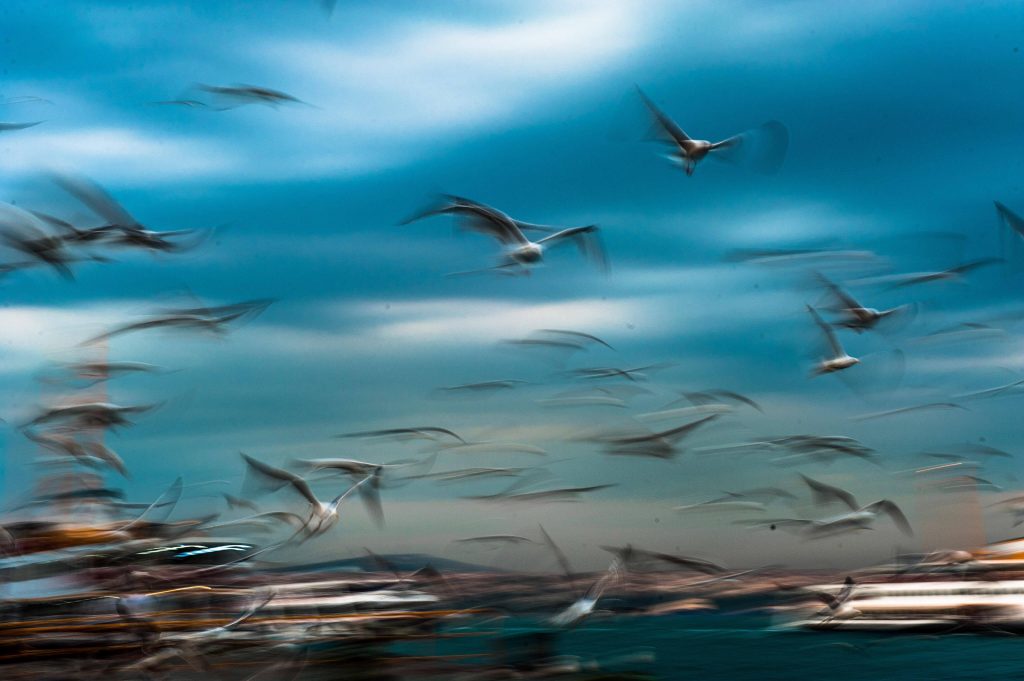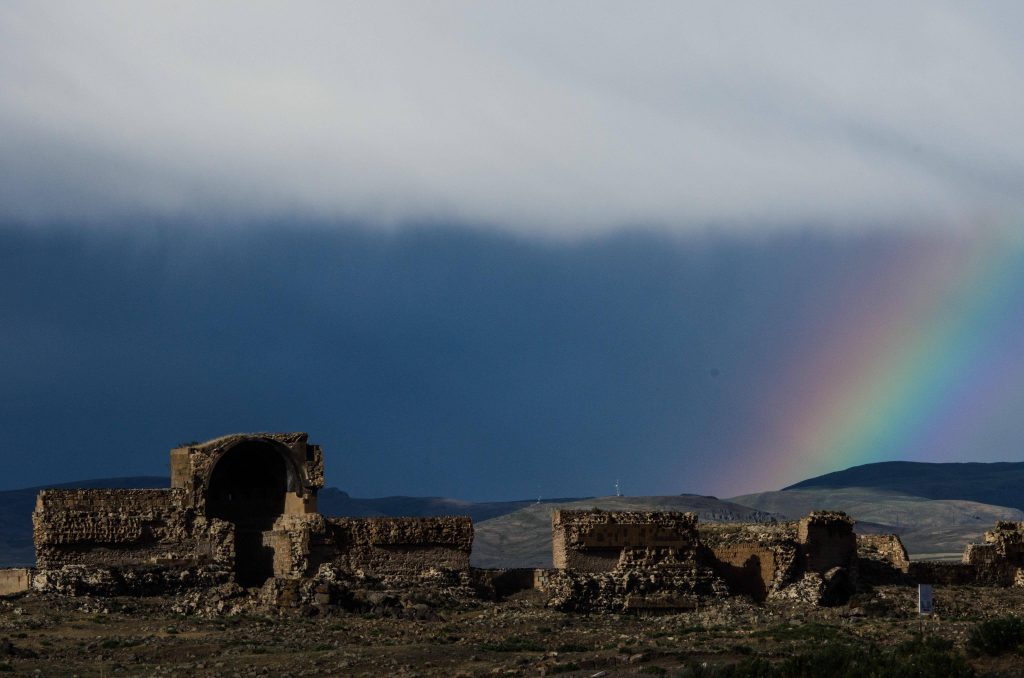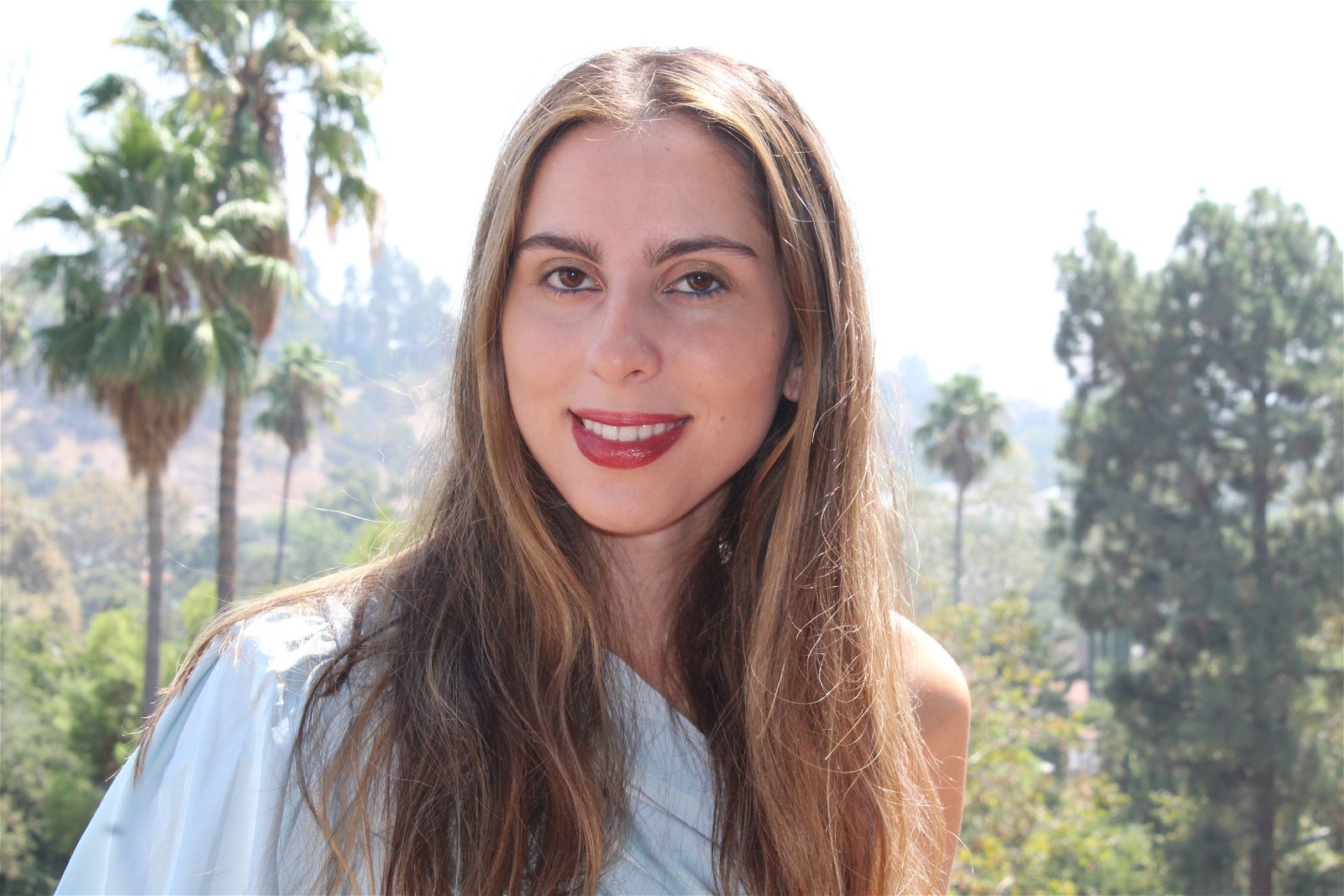Special to the Armenian Weekly

A man of many talents, Stepan Norair Chahinian brings a new way of processing information through visual representation.
From generational branches that stretch back to Urfa, Marash, Iskenderun, and Kessab, Chahinian was born in São Paulo, Brazil, in 1979. His passion for photography was inspired by his grandfather, Avedis Shahinian, who migrated from Marash to Aleppo, where he founded Studio Photo Shahinian.
Chahinian received education in architecture and urbanism from Mackenzie University in 2001, and in 2007 a master’s degree in art history from São Paulo state university. He began his profession as a photographer in 1999, while at university.
After graduating, he traveled throughout South America, Europe, the Caucasus, and the Middle East to take on photography projects. Those photographs were published in various books, newspapers, and periodicals.
He visited Turkey for the first time in 2012 to follow his family’s footsteps after they had been forced to flee their homeland, Western Armenia.
In 2015, Stepan published The Power of Emptiness: Talking with Stones in Historical Armenia, in Istanbul, Turkey, during the commemoration of the Centennial of the Armenian Genocide. In the same year, he exhibited this work in Diyarbakir and Urfa, in Turkey. A year later, his project extended to Armenia, France, and countries in South America.
Below is our interview about The Power of Emptiness and related issues.
***
Lori Sinanian: This is our second encounter since we met in Abril Bookstore’s Roslin Gallery in Glendale, Calif., for the release of your new, trilingual photography book, The Power of Emptiness. Please give our readers an understanding of who you are.
Stepan Norair Chahinian: I am a consequence of a genocide that happened more than 100 years ago. My four grandparents were victims, in different ways and scales of persecution. Their families were forced into exodus and were lucky enough to survive. So I am a classic example of a third-generation member of the Armenian Diaspora, from isolated Brazil. I graduated as an architect, and inherited photography from my grandfather as a language of art and as a path of expression and as means of reading humanity in its most different forms of manifestation.
L.S.: What is the reason behind your work?
S.N.C.: Justice, recognition, and peace among all nationalities, mostly between Armenians and Turks. I had in mind to visit Turkey and try dialogue through photography: facing a past of pain and being able to create a path of peace for the future. I have never conformed to the classical divisions within the Armenian community in which I grew up: Are you from this or that political party? Which church do you attend? Which club? Who is your father?
Since 1991, the independence—and the possibility of effective political action in a free country, with its parliament, its laws and regulations—that we were able to achieve after centuries of domination, in my opinion ended any need of political divisions inside the communities. What about being “just” Armenians? That is already a huge responsibility!

We can and need to have different opinions, but the fight for our culture, history, language, traditions must be our unified mission inside the society that we live. I do not believe that fueling hate and anger over the black past of the Turkish people will help us solve the problem, much less burn flags or swear justice via arms by preaching that one day we will conquer our rights with bullets…
My generation needs to go to today’s Turkey and face them! Show them that the plan to exterminate Armenians failed and we’re coming back. We have the truth on our side, and there is no better weapon than that. They are guilty, and this is [a] very heavy [burden]. In my case, I faced them with art, with photography, and it was an incredible experience. We have to reinvent ourselves and change the strategy in the diaspora…and we have already lost a lot of time… We have to build bridges instead of trenches.

L.S.: What is the psychology behind your title, “The Power of Emptiness?”
S.N.C.: I wanted the title to express a sensation, the one that was with me in every city, home, church, or empty school I found in the four years of travel through our historic lands. They are empty today but there’s a lot of energy stored in their memories. The stones and spaces are witnesses of the Genocide. And it was those memories, full of power, that the stones shared with me, and which I tried to reproduce through photography.
L.S.: The power of nonverbal communication, the intertwining of the past and present through interpreting images beyond the actual image… these methods of photography overpower regular conversations. Through the moments you’ve captured, what is the first image that comes to mind?
S.N.C: Although it may seem incredible, it was not even a stone, a place, or a space that impressed me so strongly, but a human being. It was the meeting with a person, an Armenian woman, who—before being photographed—took a cross out of her dress, and asked me for that photo to carry a message wherever I went. She asked to tell everyone that she is Armenian, Christian, and that she lives in the very same village where her mother, an orphan of the genocide, lived. We were, we are, and forever will be in our land. We have to value these real Armenian heroes who live and survive on the frontlines. And it was right there, that I understood that the plan failed, and the third chapter of the book is all structured on the life of the Armenians in Turkey, today.

L.S.: Talking about genocide through different mediums is a way of revisiting history to constantly remind and make sense of what has happened. The different ways to define Genocide offer a layering of different perspectives. Do you believe you allowed your audience to understand Genocide in a different way?
S.N.C.: At least it’s an effective attempt. I’m sure many people could never have imagined some of the stories behind the photos, and this is very comforting to me. I feel like a messenger. The book was all produced and published in Turkey—in five languages, and two different versions: one in Armenian, Turkish, and English; and the other in English, Portuguese, and Spanish. It was released on April 24, 2015, in the evening, during the centenary commemoration, in Istanbul. The publishing house is Armenian Aras. Throughout the four-year process, I have created great Turkish and Kurdish friends, heard countless apologies and recognition of the Genocide.
It’s clear that in the world of art there is more knowledge and consensus on our struggle. I was also arrested, and I was able to observe the more fascist side of the Turks who still manifest against the Armenians.
This increasingly latent ambiguity will make the political situation in Turkey even more confusing and spur the dissolution of the current dictatorship, which will one day certainly come. It will reveal the black face and all the dirt hidden for years. We need patience (yes, more…) and change the focal and action points.
In my case, I am very happy for the relationships and contacts I have established, and I hope that many others will experience it, too. One of my contacts, Mr. Osman Kavala, was arrested a few weeks ago without any real allegation by the Turkish government. He is perhaps the greatest reference in the world of arts and human rights in Turkey. Once again, a great mistake, like the death of Hrant Dink, that will further strain the relationship with minorities.
L.S.: Your photographs portray the voices of our ancestors, the voices of writers, lovers, creators, artists, philosophers. Your photographs give “the invisible stories, the marginalized stories” life and meaning. As an artist, what is your advice to photographers who wish to bring experiences of the past to the present moment?
S.M.C.: Let go of the stereotypes and old dogmas that are still alive in Armenians who haven’t had the chance to return to our historic lands and do not know the current Turkish society. I believe that there still are many people who fit the stereotypes, but also there are many [Turkish and Kurdish] people who are willing to help and apologize.

Take time to produce images, think and observe the more unexpected details—of constructions and of people. And believe that before Armenians, Turks, Brazilians, or Americans, we are human beings and, therefore, there are moral values that are common to us all.
Photography is more than a tool to eternalize moments. It is a gateway to dive into the enormity of the human being.
***
Stepan Norayr Chahinian is currently archiving his grandfather’s depictions of Syria and will continue to make the project into something bigger. He hopes to be able to spread his work across the United States.
He last visited Los Angeles in the beginning of October for a “short, and for what felt fast” stay. “During my duration in LA, I felt flabbergasted by the huge community. I wish to one day meet the extended community all throughout the U.S., from coast to coast. I am ready for my educational journey that will provide growth on both spectrums: for my audience and for me,” Chahinian said.
Chahinian’s book is available for purchase on Amazon and at Abril Bookstore.



Where can one purchase this book?
I am a Turkish,you guys always insulted Turk all around world now you are talking about peace,there be no peace between Turk and Armenia why .. you don’t want peace..this will be always like that.This better way ,If Turk and Armenia not talking each other that is best thing to do for peace.We all knew that this.
The Armenian Genocide is morally troublesome, for entire Armenian Nation of the world, where their survivors scattered all over the world, and yet no recognition by Turkish Government. Armenians do not hate ordinary brainwashed Turkish nationals!
Wonderful work Norair – Now how can we get hold of your Photography work in Sydney? Would love to get my hands on it. Another proud Armenian artist. Good luck.
Hi Seta K. Wehbé, the book is avaiable at ABRIL bookstore and on Amazon website! thank you!
Absolutely gorgeous and meaningful photographs. Thank you!
Hi Herosoohi Vesmadian, the book is on amazon, but you can connect with norchahinian@yahoo.com for more details and ships.
This is an admittedly belated comment, but it is from someone who has traveled extensively in the same places as the photographer has. Many of the photographs in this book are heavily manipulated, I do not mean digitally, but compositionally and emotionally. They are akin to hotels photographed to make their rooms appear bigger than they are, or tourism publicity photos carefully composed to remove modern buildings that in reality crowd around an old one, or supposedly empty beaches photographed at the only time of the day they are empty. Anyone hoping to travel to Turkey to experience a reality that is like that depicted in this book’s images is going to be disappointed – it does not exist. This book is devastation nostalgia, a creation by very careful cropping and selection of what diaspora Armenians like to think still exists in some scale in Turkey; in reality the unfortunate truth is that the devastation has been and gone.